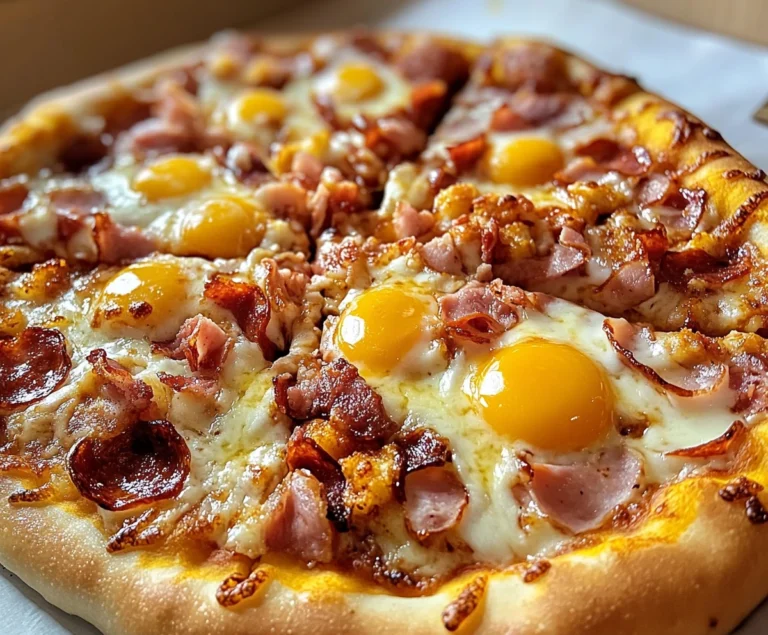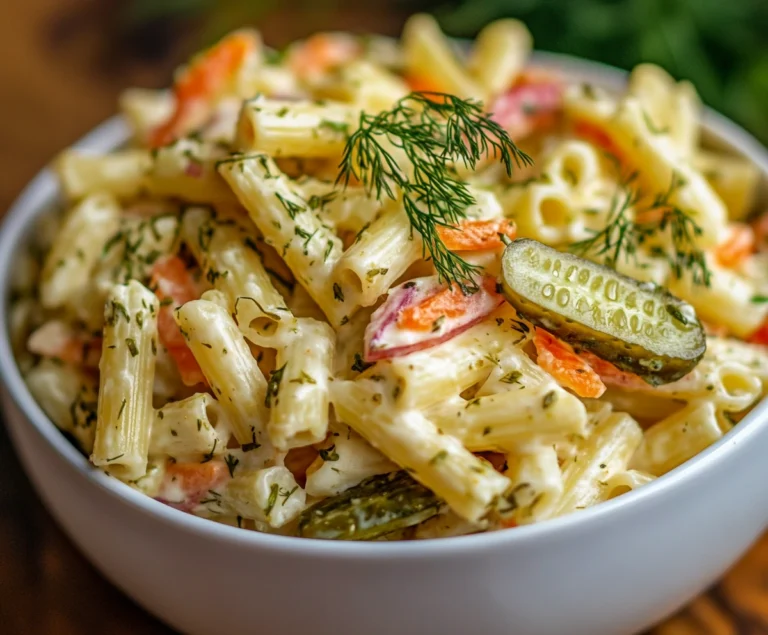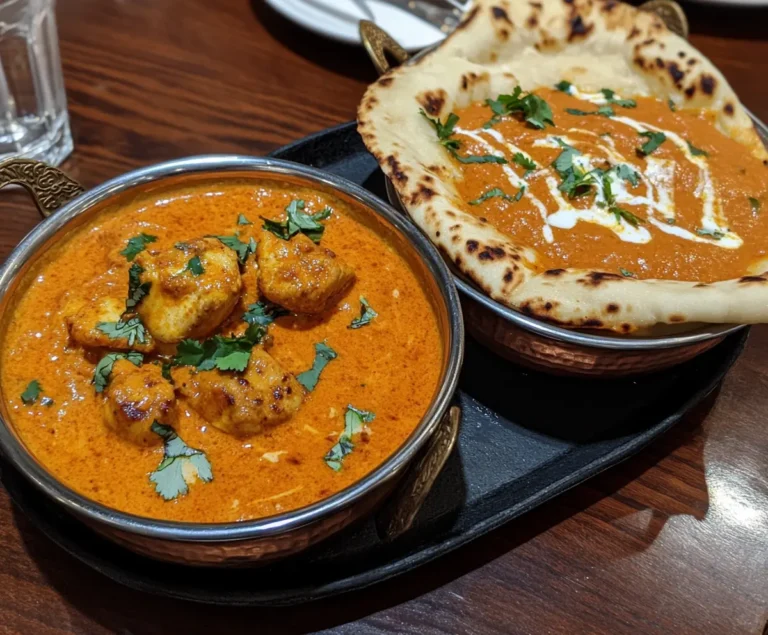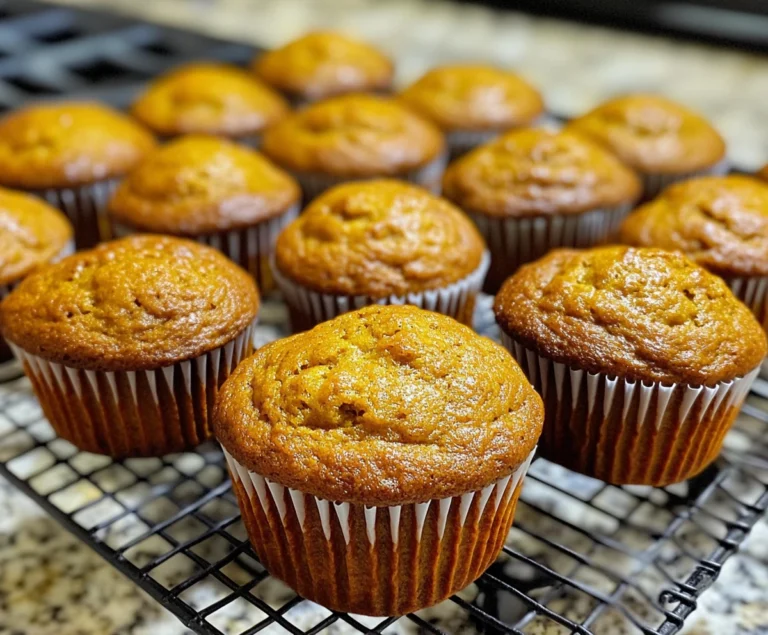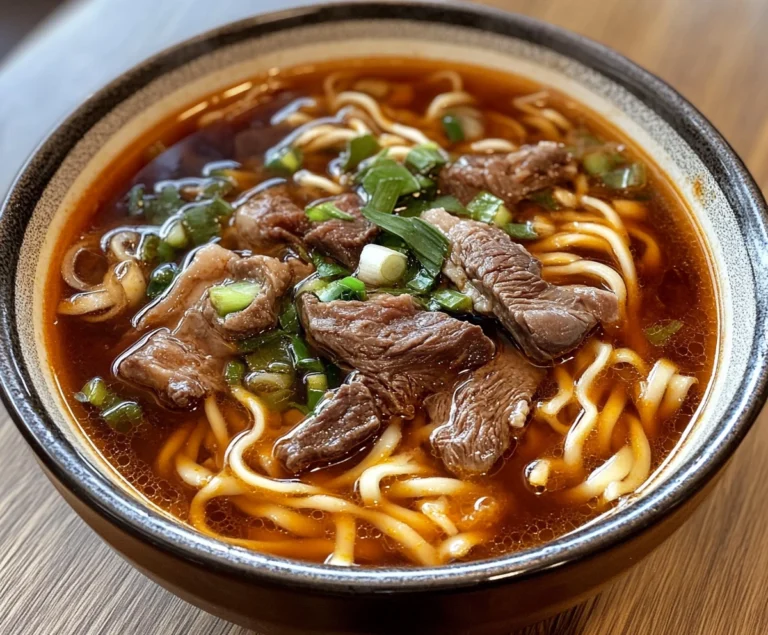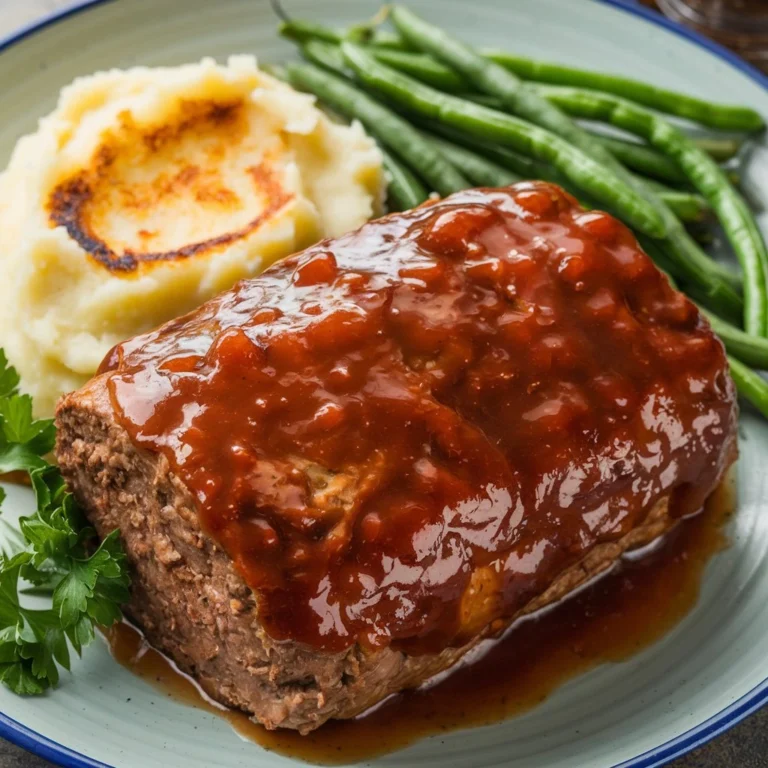How to Keep Bow Tie Pasta from Sticking Together
When it comes to cooking pasta, the goal is to achieve the perfect texture—al dente and ready to absorb the sauce. But for many, the challenge lies in preventing the pasta from sticking together, especially for shaped varieties like bow tie pasta (also known as farfalle). If you’ve ever found yourself with a clump of sticky, gummy pasta, you’re not alone.
In this comprehensive guide, we’ll dive deep into the science of Bow Tie Pasta from Sticking Together, uncover expert techniques to keep your bow tie pasta from sticking, and provide you with a treasure trove of tips and tricks that will not only make your pasta more manageable but also enhance its flavor and overall presentation.
Table of Contents:
- Introduction
- The Science of Sticking: Why Does Bow Tie Pasta Stick?
- Understanding Starch: The Key Culprit Behind Sticky Pasta
- Boiling Water: Why It Matters
- The Power of Stirring: Timing and Frequency
- Common Myths: Does Adding Oil Really Help?
- Mastering the Water-to-Pasta Ratio
- The Role of Salt: Not Just for Flavor
- Should You Rinse Your Pasta After Cooking?
- Timing Your Sauce and Pasta: A Balancing Act
- How to Keep Pasta From Sticking After Cooking
- Storing and Reheating Pasta: Best Practices
- Common Mistakes to Avoid
- Advanced Techniques: Chef Secrets for Perfect Bow Tie Pasta
- Complementary Sauces for Bow Tie Pasta
- Bow Tie Pasta Recipes for Every Occasion
- Troubleshooting FAQs
- Conclusion
1. Introduction
Bow tie pasta, or farfalle, is beloved for its elegant shape and versatility. However, its design also makes it more prone to sticking than other pasta types. Its creased center and ridged edges are excellent at trapping sauces but also notorious for trapping other pasta pieces if not handled correctly.
This guide provides you with everything you need to know to prevent your bow tie pasta from sticking. We will cover every stage of the cooking process, from the initial boil to the best practices for serving, storing, and reheating. Along the way, we will also address common pasta myths and discuss how to time your sauce preparation for a seamless cooking experience.
2. The Science of Sticking: Why Does Bow Tie Pasta Stick?
Understanding why pasta sticks together is the first step in preventing it from happening. The primary reason for sticky pasta lies in the natural properties of wheat. Pasta is made from flour, usually semolina, which contains a high amount of starch. When pasta is added to boiling water, the outer layer starts to soften and release starch into the water.
This starch is sticky by nature and can cause the individual pasta pieces to glue themselves together if not given enough room to move around or if not stirred properly.
For bow tie pasta, this issue is even more pronounced due to the shape. The wings of the pasta have a tendency to fold over or overlap in the pot, making them more likely to stick together. The folded areas of the pasta are also thicker, so they tend to cook more slowly, leading to uneven cooking and clumping.
Key reasons why bow tie pasta sticks together:
- Shape: The folded design of the pasta encourages clumping.
- Starch Release: Pasta releases starch as it cooks, making the surface sticky.
- Insufficient Stirring: Not stirring the pasta frequently enough allows it to settle and stick.
- Water Volume: Using too little water creates a concentrated starch solution, leading to sticky pasta.
The goal is to manage the starch and the movement of the pasta, ensuring each piece cooks evenly and independently.
3. Understanding Starch: The Key Culprit Behind Sticky Pasta
Starch plays a dual role in pasta cooking. On the one hand, it can be the enemy, causing stickiness and clumping. On the other hand, it is what makes pasta a perfect vehicle for sauces. When you cook pasta, the starch granules swell and burst, releasing starch into the water and onto the surface of the pasta.
This surface starch is crucial for helping sauces cling to the pasta, creating that beautiful, flavorful coat that everyone loves. But too much starch, or improper handling of the starch, will result in pasta sticking together.
When pasta cooks in boiling water, starch is released into the water, which is why the water becomes cloudy. This starch helps make pasta “sticky” if it isn’t diluted in enough water or if the pasta isn’t stirred. For bow tie pasta, where parts of the pasta may be thicker or folded over, this is especially critical. The uneven exposure to heat can cause over-starch production in the folds, contributing to clumping.
Managing starch means ensuring the pasta has enough water to dilute the starch and using proper stirring techniques to keep the pieces separate.
4. Boiling Water: Why It Matters
One of the most important steps in cooking pasta is ensuring that the water is boiling before adding the pasta. This might seem basic, but it’s a crucial part of the process that can’t be overlooked.
When pasta is added to boiling water, the high heat ensures that the starch on the surface gelatinizes quickly, creating a smooth, protective layer around the pasta. This prevents excess starch from leaking out and causing clumping. If you add pasta to water that’s not fully boiling, the starch will leach out too slowly, increasing the chances of it sticking together.
Tips for achieving the right water temperature:
- Wait for a rolling boil: The water should be bubbling vigorously before you add the pasta.
- Cover the pot while waiting for the water to boil to speed up the process.
- Maintain the boil: Don’t let the water drop to a simmer once you’ve added the pasta. Keep it at a steady boil.
For bow tie pasta, ensuring the water is hot enough will prevent the wings from folding in on themselves and sticking.
5. The Power of Stirring: Timing and Frequency
Stirring may seem like a minor step, but it’s one of the most effective ways to prevent your bow tie pasta from sticking. Pasta begins to release starch into the water as soon as it hits the pot, and if it isn’t stirred, the pieces will settle and stick to each other or to the bottom of the pot.
How often should you stir?
- Immediately: As soon as you add the pasta to the water, stir it. This prevents initial sticking as the pasta begins to soften.
- At least 2-3 times during cooking: Continue stirring every few minutes to ensure the pasta remains separate. For bow tie pasta, this step is even more critical because the wings tend to fold over.
Why is stirring important?
- Prevents pasta from settling: Without stirring, pasta will sink to the bottom of the pot and stick.
- Ensures even cooking: Stirring keeps the pasta moving, so it cooks evenly without some pieces becoming overcooked or clumping together.
If you’re cooking a large batch of bow tie pasta, stirring is especially important. In small pots, the pasta is more likely to crowd together, leading to more stickiness. Make sure to stir frequently to prevent this.
6. Common Myths: Does Adding Oil Really Help?
One of the most persistent myths about cooking pasta is that adding oil to the water will keep the pasta from sticking. While it’s true that oil can help prevent stickiness to some degree, it also introduces several downsides.
Why adding oil is not the best solution:
- It prevents sauce from sticking: While oil may reduce some sticking, it also coats the pasta in a thin layer of oil that makes it difficult for sauces to adhere. The result is pasta that is less flavorful.
- It doesn’t address the main issue: Sticking is primarily caused by starch and insufficient stirring, not by a lack of oil.
- It’s unnecessary: Proper stirring and water-to-pasta ratios are more effective at preventing sticking than oil.
If you’re still concerned about sticking, you can add a small amount of olive oil to the cooked pasta after draining—but only if you’re planning to store or serve the pasta cold (such as in a pasta salad). In these cases, the oil can help keep the pasta from clumping as it cools.
For a rich sauce, you’ll want the starch from the pasta to help the sauce cling to each piece, which is why avoiding oil in the cooking water is a better strategy. If you’re making a creamy sauce like alfredo, avoid adding oil to keep the pasta and sauce perfectly integrated.
7. Mastering the Water-to-Pasta Ratio
One of the golden rules of pasta cooking is using enough water. The recommended ratio is 3-4 quarts of water per pound of pasta. Why so much water? Because pasta needs room to move around freely as it cooks, and this helps dilute the starch that is released.
Key reasons to use enough water:
- Dilutes the starch: More water means the starch has less chance of becoming concentrated and sticky.
- Prevents clumping: If the pasta doesn’t have enough room to move, it will clump together.
- Ensures even cooking: With enough water, the pasta can cook evenly without some pieces becoming overcooked or undercooked.
For bow tie pasta, the wide, flat shape means it needs even more room than other types of pasta, such as spaghetti or penne. Using a large pot ensures that each piece of pasta has enough space to move and cook properly.
How to know if you’re using enough water:
- Use a big pot: The pot should be large enough to hold both the water and the pasta comfortably.
- Check the water level: The pasta should be fully submerged, and there should be room for the water to boil without overflowing.
8. The Role of Salt: Not Just for Flavor
Salt plays an essential role in pasta cooking, but not just for flavor. While it certainly enhances the taste of the pasta, salt also helps improve the texture. The right amount of salt helps to firm up the surface of the pasta, making it less likely to become gummy or sticky.
The general rule of thumb is to use about 1 tablespoon of salt per quart of water. This ensures the pasta is seasoned evenly and has a firm, slightly chewy texture.
Why is salt important?
- Prevents stickiness: Salt helps create a firm texture, which reduces the pasta’s tendency to stick.
- Enhances flavor: Well-salted pasta water seasons the pasta from the inside out.
Salt is especially important when cooking bow tie pasta, as the thicker parts of the pasta need more time to cook and are more prone to sticking if the texture is too soft.
9. Should You Rinse Your Pasta After Cooking?
Rinsing pasta is a widely debated topic. In most cases, rinsing is not recommended, as it washes away the starch that helps sauces stick to the pasta. However, there are exceptions.
When to rinse:
- For cold pasta dishes: If you’re making a pasta salad, rinsing is a good idea because it cools the pasta quickly and prevents it from sticking as it sits. In these cases, rinsing won’t matter because you don’t need the starch to help the sauce adhere.
- To stop overcooking: If your pasta is finished cooking but your sauce isn’t ready, a quick rinse in cold water can stop the cooking process. However, this should be a last resort, as it also removes flavor and starch.
When not to rinse:
- For hot pasta dishes: Rinsing washes away the starch that helps sauce cling to the pasta. If you’re serving the pasta with a sauce, avoid rinsing to ensure a better texture and flavor.
10. Timing Your Sauce and Pasta: A Balancing Act
Timing is everything when it comes to cooking pasta. One of the biggest mistakes people make is finishing their pasta too early and letting it sit in the colander while they finish the sauce. This leads to sticky, clumpy pasta.
How to time your pasta and sauce perfectly:
- Start the sauce first: If your sauce takes longer to cook than the pasta, begin cooking it before you start boiling the water for the pasta.
- Toss immediately: As soon as the pasta is done, drain it and toss it with the sauce. This keeps the pasta from sticking and allows the sauce to cling to the starch on the pasta’s surface.
- Use pasta water: If your sauce needs a little more liquid, add some of the reserved pasta water. This starchy water helps thin the sauce without making it watery and helps it stick to the pasta better.
For more complex sauces like tomato or creamy sauces, start them early and time the pasta so that it finishes just as the sauce is ready.
11. How to Keep Pasta From Sticking After Cooking
If you’ve cooked your pasta perfectly but need to store it or keep it warm before serving, there are a few tricks to keep it from sticking.
How to prevent pasta from sticking after draining:
- Toss with sauce immediately: The best way to prevent pasta from sticking after cooking is to toss it with sauce right away. The sauce coats the pasta and prevents it from clumping.
- Add a bit of pasta water: If you’re not ready to serve the pasta, add a small amount of reserved pasta water to the pot and toss the pasta. This will keep it moist and prevent sticking.
- Drizzle with olive oil: For pasta that will be stored or served cold, like in a salad, tossing it with a small amount of olive oil will keep the pieces separate. Just be sure not to overdo it, as too much oil can make the pasta greasy.
If you need to store the pasta for later, cool it down quickly to prevent further cooking and sticking.
12. Storing and Reheating Pasta: Best Practices
Leftover pasta can be tricky to handle, as it tends to clump together as it cools. However, there are ways to store and reheat it without losing its texture.
How to store pasta:
- Cool it quickly: After draining, toss the pasta with a small amount of olive oil to prevent sticking. Spread it out on a baking sheet to cool quickly and prevent further cooking.
- Store in an airtight container: Once the pasta is cooled, transfer it to an airtight container and refrigerate. This will keep it fresh and prevent it from drying out.
How to reheat pasta:
- Reheat with sauce: The best way to reheat pasta is to warm it in a pan with the sauce. This ensures the pasta absorbs the sauce and doesn’t dry out.
- Add water if necessary: If the pasta seems too dry, add a little pasta water or regular water to loosen it up.
Pasta can also be reheated in the microwave, but it’s important to cover it to retain moisture. Be sure to stir halfway through to ensure even heating.
13. Common Mistakes to Avoid
Even experienced cooks can fall into bad habits when cooking pasta. Here are some common mistakes and how to avoid them:
Overcooking the pasta:
- Overcooked pasta becomes mushy and sticky. Always cook to al dente and taste test towards the end of the cooking time.
Not using enough water:
- Crowding pasta in a small pot causes it to stick. Use at least 3-4 quarts of water per pound of pasta.
Not stirring enough:
- Stirring is crucial, especially in the first few minutes of cooking. If you don’t stir, the pasta will stick together.
Adding oil to the water:
- As discussed, adding oil to the water can prevent sauce from sticking. Focus on stirring instead.
14. Advanced Techniques: Chef Secrets for Perfect Bow Tie Pasta
Professional chefs have a few extra tricks up their sleeves when it comes to perfect pasta cooking. Here are some advanced techniques to take your pasta game to the next level:
Use pasta water in the sauce:
- Pasta water contains starch that helps sauces cling to the pasta. Save a cup of pasta water before draining, and add it to the sauce to create a silky, cohesive dish.
Cook pasta in the sauce:
- For an extra flavorful dish, try finishing the pasta in the sauce. Once the pasta is nearly cooked, transfer it to the sauce and let it finish cooking there. This helps the pasta absorb the flavors of the sauce.
Salt the water generously:
- Chefs use more salt than home cooks when boiling pasta—typically about 1 tablespoon per quart of water. This seasons the pasta itself and enhances the overall dish.
15. Complementary Sauces for Bow Tie Pasta
Bow tie pasta works well with a variety of sauces, thanks to its ridges and folds, which trap sauce beautifully.
Cream-based sauces:
- Alfredo, carbonara, and other cream-based sauces cling to the bow tie pasta’s surface, making every bite rich and flavorful.
Tomato-based sauces:
- Classic marinara or arrabbiata sauces are perfect for bow tie pasta. The pasta’s folds hold onto the chunky tomato pieces, giving a satisfying bite.
Pesto:
- The flat surfaces of the bow tie pasta are ideal for trapping pesto, making for a deliciously herbaceous dish.
For more inspiration, check out these unique pasta recipes like tomatillo pasta that blend Italian traditions with Mexican flavors.
16. Bow Tie Pasta Recipes for Every Occasion
Bow tie pasta is a versatile shape that can be dressed up or down, depending on the occasion.
Quick weeknight dinners:
- Garlic Parmesan Chicken Pasta: A simple yet satisfying dish that combines tender chicken with a rich, garlicky sauce.
- Tomato Basil Pasta Salad: A light and refreshing option for summer dinners or potlucks.
Elegant dinner parties:
- Shrimp Alfredo: A decadent seafood dish that pairs perfectly with bow tie pasta.
- Mushroom Truffle Pasta: For a luxurious meal, try a rich truffle-infused cream sauce with earthy mushrooms.
Explore more dinner ideas with dishes like steak pasta for an elevated meal that impresses guests.
17. Troubleshooting FAQs
Even with the best techniques, you might run into issues while cooking pasta. Here are some common questions and troubleshooting tips:
Why does my pasta still stick together even though I stirred it?
- If your pasta is still sticking despite stirring, the water may not be hot enough or you might not be using enough water. Ensure the water is at a full boil before adding the pasta, and use at least 3-4 quarts of water per pound.
My pasta is too soft. What happened?
- Overcooked pasta becomes soft and mushy. Always cook to al dente and taste test towards the end of the cooking time. Set a timer for a minute or two before the recommended time and check the texture.
Why does my sauce slide off the pasta?
- If the sauce isn’t sticking to the pasta, it may be because the pasta was rinsed or the sauce is too thin. To thicken the sauce, simmer it longer or add a bit of reserved pasta water to help it cling.
18. Conclusion
Achieving perfect, non-sticky bow tie pasta is all about understanding the science behind cooking pasta, mastering the right techniques, and timing your sauce and pasta correctly. Whether you’re making a simple weeknight dinner or preparing a sophisticated dish for guests, these tips will help you cook pasta that’s delicious, evenly cooked, and ready to take on your favorite sauces.
Remember to always start with boiling water, use enough salt, stir frequently, and avoid common mistakes like adding oil to the water. With these techniques in your arsenal, you’ll never have to deal with sticky pasta again.
Looking for more inspiration? Check out more unique pasta dishes like garlic parmesan chicken pasta or explore fusion recipes with tomatillo pasta.
Enjoy your perfectly cooked pasta!


